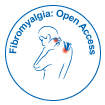Evaluating Weather's Effect on Fibromyalgia Patients Using the Revised Fibromyalgia Impact Questionnaire and the Brief Pain Inventory
Received Date: Dec 13, 2016 / Accepted Date: Jan 27, 2016 / Published Date: Jan 30, 2017
Abstract
Background: The objective of this study was to evaluate weather’s effect on fibromyalgia symptoms as measured by the Revised Fibromyalgia Impact Questionnaire (FIQR) and the Brief Pain Inventory (BPI), which had not been reported previously.
Methods: 67 patients with fibromyalgia from the Ohio State University Rheumatology clinic were recruited for the study. We received survey results back from 30 patients. Patients were given questionnaires for the FIQR and BPI to fill out for 7 consecutive days. Data was collected from February 1, 2015 through February 7, 2015. We recorded daily weather parameters (temperature, humidity, and barometric pressure) for Columbus Ohio from the National Weather Service website beginning on January 31, 2015 to February 8, 2015. Linear correlations between the weather parameters, FIQR, and BPI were done using Pearson correlation coefficient. Analysis of covariance (ANCOVA) was used to correlate each patient trend with the weather parameters. Finally, principal component analysis (PCA) was used to recognize patterns in our data.
Results: We found no significant effect of weather on fibromyalgia symptoms using ANCOVA as measured by FIQR and BPI. PCA showed weak significant correlations between the second and the third principal components with the barometric pressure (0.26) and the humidity (-0.15), respectively.
Conclusion: We did not find any statistically significant effect of weather on fibromyalgia symptoms as measured by FIQR and BPI. PCA of the FIQR and BPI showed low correlation with barometric pressure and humidity but they accounted for only 6.6% and 5% of the variability in our dataset, which are too low to extract strong conclusions from.
Keywords: Fibromyalgia; Weather; Barometric pressure
Citation: Kim D, Pujolras MP, Whisler DL, Hackshaw KV (2017) Evaluating Weather’s Effect on Fibromyalgia Patients Using the Revised Fibromyalgia Impact Questionnaire and the Brief Pain Inventory. Fibrom Open Access 2: 112.
Copyright: © 2017 Kim D, et al. This is an open-access article distributed under the terms of the Creative Commons Attribution License, which permits unrestricted use, distribution, and reproduction in any medium, provided the original author and source are credited.
Share This Article
Open Access Journals
Article Usage
- Total views: 3504
- [From(publication date): 0-2017 - Apr 04, 2025]
- Breakdown by view type
- HTML page views: 2662
- PDF downloads: 842
